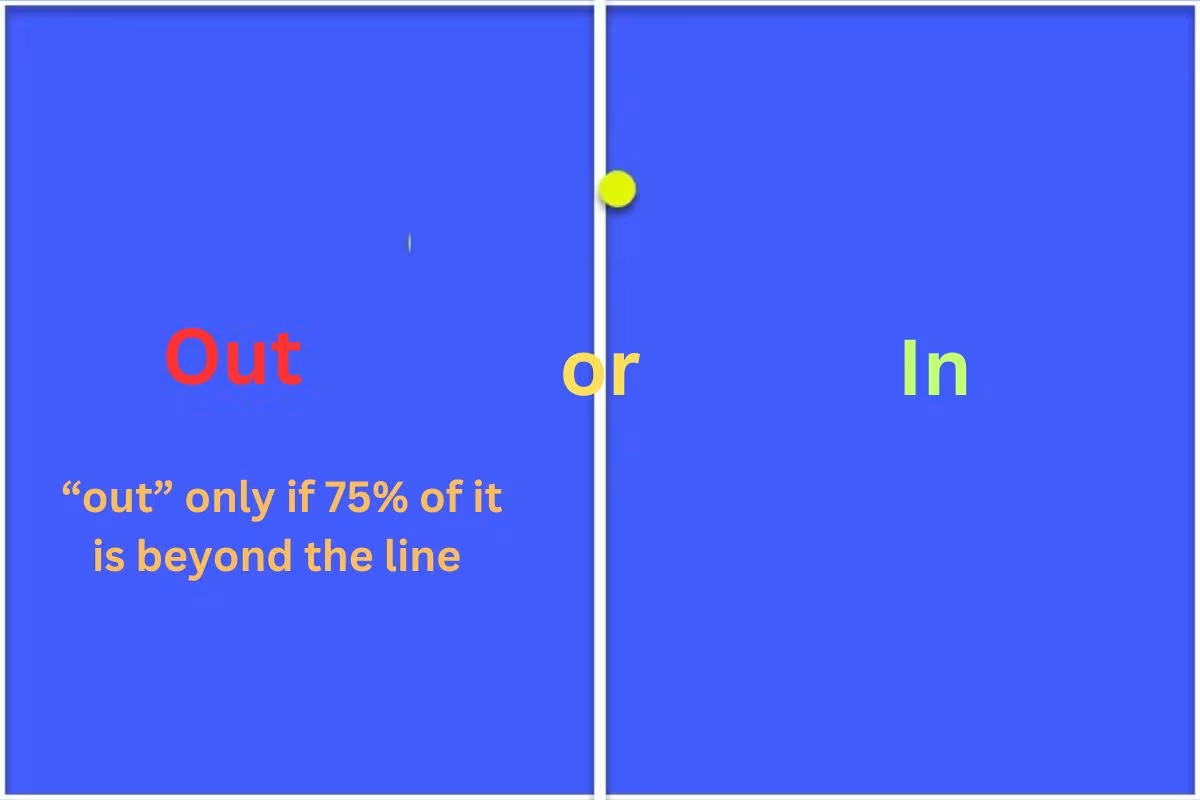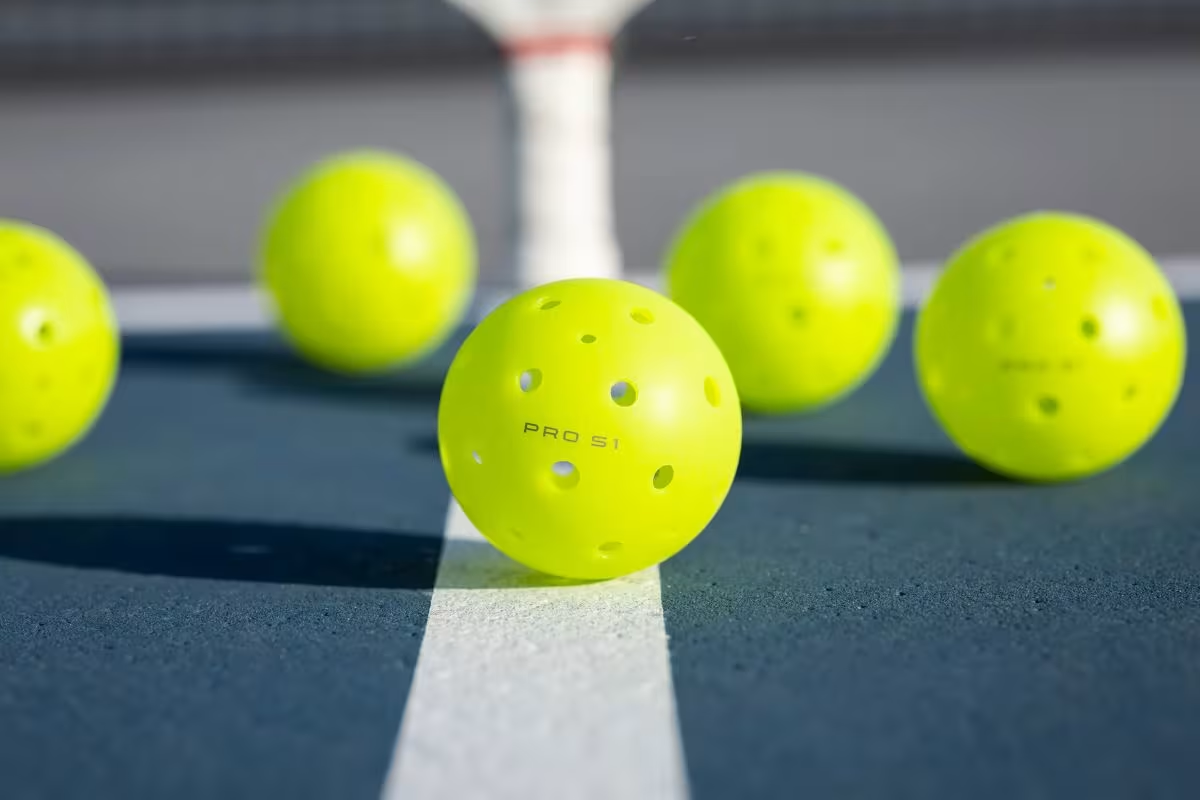Pickleball New Line Call Controversy Among Players: Line calls have always been a controversial issue in professional pickleball. For many, particularly those with a tennis background, the instinct is to call a ball “in” if any part of it appears to touch the line. However, this approach proves inadequate in pickleball. The nature of the ball presents unique challenges; only a small portion makes contact with the ground upon landing. Unlike tennis balls, which compress on impact, pickleballs maintain their shape, complicating the determination of the point of contact without reliable line cameras.
Historically, access to accurate replay systems and line cameras at PPA events has been limited. This changed in early September when the United Pickleball Association of America (UPA-A) introduced Close Call Replay, featuring line cameras that record at a remarkable 240 frames per second. This technological advancement prompted the UPA-A to roll out new rules and guidelines for referees and players concerning line calls.
The Controversial 75% Rule in Pickleball
Among the significant changes is the introduction of the 75% Rule. This guideline states that a ball is considered “out” only if at least 75% of it lies beyond the baseline or sideline upon landing. If more than 25% of the ball appears to be touching either line at the moment of contact, it should be ruled “in.”
This creates a problem. The rule relies heavily on referees to accurately assess how much of the ball is in or out, a challenging task filled with the potential for significant variance among officials.
This particular challenge became painfully evident in the weeks following the rule’s implementation. During a recent MLP New York City match between the Chicago Slice and the Las Vegas Night Owls, Chicago’s Allison Harris executed an Around-the-Paddle (ATP) shot on match point that was initially called out by the Las Vegas team.
View this post on Instagram
However, upon reviewing the replay, it was revealed that the ball’s point of contact was outside of the line, leading commentators Ryan Dawidjan and Carolyn Penner to speculate that the initial “out” call would stand. Thanks to the 75% Rule, though, the call was overturned, and the ball was deemed in.

A Closer Look at the Call
Upon reviewing the Close Call Replay from the match, it appeared that approximately 80% of the ball was to the left of the sideline, suggesting an appropriate “out” call. However, the referees interpreted the play differently, declaring it “in.”
While differing opinions on calls are to be expected, the concern arises from the reliance on individual interpretation in such critical decisions. This was not an isolated incident. Just weeks earlier, during the CIBC Atlanta Slam—the first PPA event utilizing Close Call Replay—a similar situation arose in the men’s doubles semifinal.
In that match, Jaume Martinez Vich faced off against JW Johnson and Dylan Frazier. With match point on the line, Martinez Vich hit a backhand speedup that landed incredibly close to the back of the baseline. Initially ruled “out” by Frazier, the ball was subsequently determined to be “in” after review, overturning yet another “out” call—a decision that many observers agreed with based on the 75% Rule.
Although the ball’s point of contact appeared to be just beyond the baseline, the slow-motion view indicated that more than 25% of the ball was indeed over the line upon landing. Nonetheless, the issue of interpretation persisted. Frazier exhibited visible shock when his call was overturned, and commentator Adam Stone remarked that he, too, believed the ball was “out” after watching the replay.
Moving Forward
While the implementation of Close Call Replay at PPA and MLP events represents a significant leap forward for pickleball, the current guidelines for interpreting the footage are leading to increased confusion and frustration among players and fans.
Zane Navratil captured the sentiment perfectly in a recent social media post, saying, “We finally have close call replay, and we’re still finding a way to blow calls with this new 25/75 rule.” A reevaluation of these rules is necessary to enhance the integrity of the game and the satisfaction of its players.
We finally have close call replay and we’re still finding a way to blow calls with this new 25/75 rule 😂
— Zane Navratil (@ZaneNavratil) September 22, 2024
News in Brief: Pickleball New Line Call Controversy Among Players
Line calls have long been a controversial issue in pro pickleball, particularly with the introduction of the 75% Rule by the United Pickleball Association of America. This rule stipulates that a ball is deemed “out” only if 75% of it is beyond the line, a guideline that has led to varied interpretations by referees.
Recent matches have highlighted the confusion surrounding this rule, raising concerns about its effectiveness. While the addition of Close Call Replay technology enhances officiating, the ambiguity in current guidelines calls for a reevaluation to ensure clearer and fairer outcomes for players and fans alike.
ALSO READ: Pickleball Rises in Iowa: From City Streets to Barnyard Courts, Everyone’s Playing!
